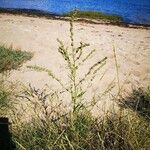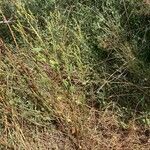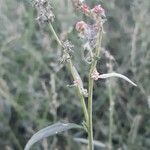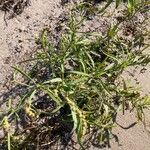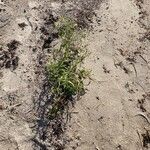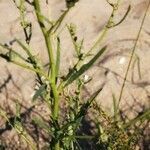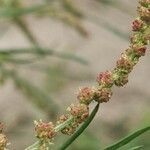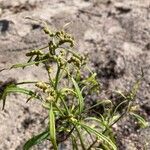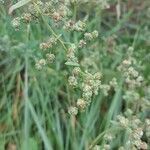Annual, dwarf shrub, 0.10-0.75 m high; branches greenish yellow-striped, ± angled. Leaves up to 100 x 150 mm, lanceolate to linear, entire sinuate or irregularly toothed, base petiole-like, both surfaces glabrescent. Male and female flowers in mixed separate clusters, up to 10 mm in diam. at end of terminal, long-stemmed panicles. Flowering time Mar., June. Fruiting bracts up to 5 x 4 mm, triangular-deltoid, squamose, thickish herbaceous. Seed ± 1 mm in diam., brown.
A herb.
